Go back
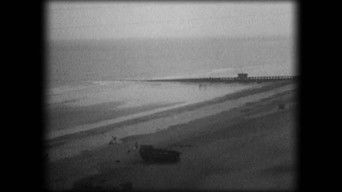
Cromer to Cambridge
Episode number: 1
Overview: Cromer to Cambridge His first journey follows in the footsteps of the new monarch for the new century, King Edward VII, from the grand estates of Norfolk to a bivouac on Brownsea Island. In this first episode, Michael takes a pot shot at the sport of kings at a country estate, where the king dallied with his mistress. He learns the ropes aboard an Edwardian wherry on the Norfolk Broads and joins variety performers to tap dance on Cromer Pier. In Cambridge, he investigates the student days of the young Prince of Wales and the novelist EM Forster, author of Howard's End.
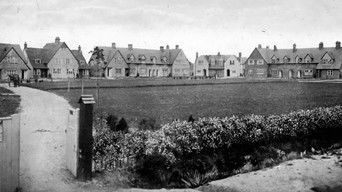
Letchworth Garden City to Herne Hill
Episode number: 2
Overview: Letchworth Garden City to Herne Hill Michael joins a garden party where a fourth-generation citizen of Letchworth introduces him to the city's community spirit. Heading into the capital, Michael discovers a favoured haunt of King Edward VII and samples the monarch's favourite tipple, the King's Ginger, invented to keep him warm in his horseless carriage. Improvements to the London Underground in the early 20th century gave us a network of electric railways, which shaped our modern capital. Inside London's newest rail tunnel, Michael meets engineer Jonathan Cooper to discover more about current improvements to London's oldest deep-level tube line, the Northern line, which is being extended.
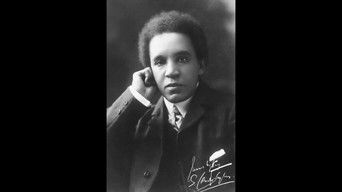
Croydon to Shoreham-by-Sea
Episode number: 3
Overview: Croydon to Shoreham-by-Sea Steered by his Edwardian Bradshaw's guide, Michael Portillo arrives in west Croydon, where he uncovers a once-celebrated, now forgotten, mixed-race composer with an uncannily familiar name. With the modern British rail network now half the size of the Edwardian one, Michael is delighted to discover a railway renaissance in Three Bridges. After inspecting a new depot and its fleet of new Class 700 trains, Michael is accorded the great honour of washing one down. Next stop Lewes, where Michael makes a beeline for Charleston, the beautiful home of the artists Vanessa Bell and Duncan Grant, where he finds every surface exquisitely decorated by the inhabitants. At Shoreham-by-Sea, Michael discovers that magnificent Edwardians in flying machines took off from the oldest licensed airport in the country. Michael takes to the skies.
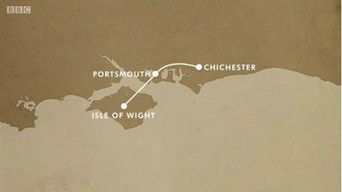
Chichester to Cowes
Episode number: 4
Overview: Chichester to Cowes His early 20th-century Bradshaw's guide in hand, Michael Portillo is in Chichester, West Sussex, where he encounters an Edwardian motoring duo patronised by King Edward VII. After a grand tour of their factory, he is treated to some R&R in one of their finest vehicles. Arriving in the seaside resort of Southsea, Hampshire, Michael heads for the majestic King's Theatre, built by a renowned theatre designer of the day. He treads the boards with a group of true thespians, in a community production of Lads in the Village. Crossing the Solent with a ticket to Ryde, Michael boards the Island Line to travel along the pier in a 1930s London Underground carriage, then hops on to the Isle of Wight heritage line bound for Wootton. His destination is Osborne House, where the future King Edward VII spent much of his childhood
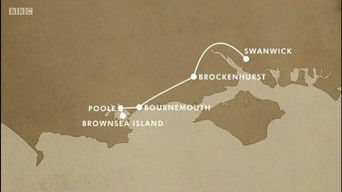
Swanwick to Brownsea Island
Episode number: 5
Overview: Swanwick to Brownsea Island Steered by his Edwardian Bradshaw's guide, Michael Portillo promises to do his best on the island where Robert Baden Powell began the Scout movement in the early 20th century. Joining a group of modern Scouts he learns to build a bivouac and finds out what it is about Scouting that still appeals to boys - and girls - today. In the New Forest, Michael searches out some unsung heroes of the First World War, the ponies who became war horses, and hears their story from a commoner who runs a stable and riding school. Plus in Bournemouth, he investigates a very British institution: the beach hut.
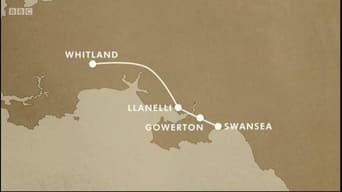
Whitland to Swansea
Episode number: 6
Overview: Dressed in the colours of the Welsh flag and with his 'new' Edwardian Bradshaw's guide in hand, Michael Portillo embarks on a railway adventure, from the coalfields of south Wales around the Bristol Channel to the southernmost tip of Cornwall. His first stop is Whitland in Carmarthenshire, where in the early 20th century, thrill-seekers gathered on Pendine Sands to indulge their need for speed. Michael joins latter day petrolheads to burn rubber on the beach in an iconic three-wheeler. In Llanelli, Michael retraces the fateful events of a national rail strike in 1911 and is stirred by the sound of a male voice choir as they sing the town's unofficial anthem.

Pontyclun to Ebbw Vale Town
Episode number: 7
Overview: Pontyclun to Ebbw Vale Town Armed with his Edwardian Bradshaw's guide, Michael strikes gold at the Royal Mint in Llantrisant, where after much frisking, he gains access to the inner vaults. At Cardiff Arms Park, Michael revisits the scene of a triumphant Welsh victory over the fearsome All Blacks and hears from Welsh international Gerald Davies how the Welsh national anthem kicked the intimidating Haka into touch. In Cardiff Bay, Michael discovers the departure point for one of the Edwardian era's most famous expeditions - Scott's ill-fated voyage to the Antarctic. Aboard the racing yacht Challenge Wales, Michael meets young sailors training for a Tall Ships Race.
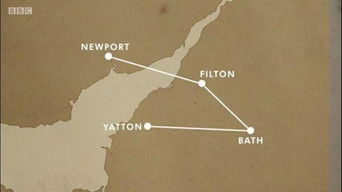
Newport to Clevedon/Yatton/Bristol Channel
Episode number: 8
Overview: Newport to Clevedon Yatton Bristol Channel Steered by his early 20th-century Bradshaw's guide, Michael discovers the birthplace of British aviation in Bristol and prepares an Airbus 380 for a smooth landing at Filton. In Newport, he uncovers the heroism of a young boy who rescued a workman from a dock disaster in which many died. Michael admires the Albert Medal awarded to the brave Tom Lewis, now in the proud possession of his great grandson, the 385th Mayor of Newport. Michael discovers the home of a forward-thinking Edwardian family at Eagle House in Batheaston. Frieda Roberts remembers the suffragettes who campaigned for votes for women in the early 20th century and found refuge at the house after their release from prison. And in the Somerset town of Clevedon, Michael goes to the movies in a perfectly preserved cinema dating from 1912 and hears about the first film to be shown there, in aid of survivors of the Titanic disaster.

Taunton to Newton Abbot
Episode number: 9
Overview: Taunton to Newton Abbot With purple, green and yellow ribbons flying, and sporting ankle bells, Michael Portillo is led a merry dance in Stogumber - all in the name of fertility. He visits a celebrated Edwardian garden at Hestercombe to discover the fruits of an unusual partnership and learns how to deadhead the roses. There is a trip aboard the longest heritage line in England and the chance to ring in the new era at Exeter Cathedral before dining out in style on King Edward VII's coronation gala dinner at Bovey Castle.
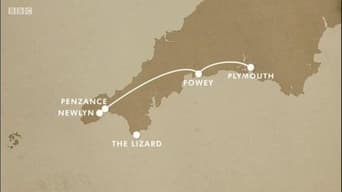
Plymouth to The Lizard
Episode number: 10
Overview: Taunton to Newton Abbot With purple, green and yellow ribbons flying, and sporting ankle bells, Michael Portillo is led a merry dance in Stogumber - all in the name of fertility. He visits a celebrated Edwardian garden at Hestercombe to discover the fruits of an unusual partnership and learns how to deadhead the roses. There is a trip aboard the longest heritage line in England and the chance to ring in the new era at Exeter Cathedral before dining out in style on King Edward VII's coronation gala dinner at Bovey Castle.
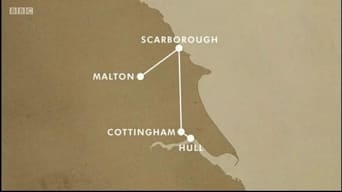
Hull to Malton
Episode number: 11
Overview: Michael Portillo embarks on a journey through Britain steered by his Edwardian railway handbook. He begins in the East Yorkshire port of Hull, where he heads for the docks through which millions of migrants passed at the turn of the 20th century and which are today getting a second wind. At Cottingham, Michael picks up the trail of the future King Edward VII, when he was Prince of Wales. Bertie, as he was known in the family, became embroiled in scandal after a high-stakes game of cards in the grand house of Tranby Croft. Next stop is the beautiful seaside town of Scarborough, which Michael discovers was reeling in 1914 from bombardment by German warships and still carries the scars. Rose gardens, follies and Baroque architecture belonging to a radical countess entice Michael to the market town of Malton, where he finds Howards still inhabit their castle.

York to Frizinghall
Episode number: 12
Overview: York to Frizinghall Armed with his Edwardian Bradshaw's guide, Michael Portillo conducts important research in an historic tea room, built by an Edwardian immigrant to the city of York. Research of a more sombre kind leads Michael to the roots of our modern welfare state in the work of an early 20th-century Quaker investigator, whose family manufactured chocolate. Next stop is Leeds, where Michael discovers the city's textile heritage, which relied in Edwardian times on a group of skilled Jewish immigrants to take it forward. Michael learns how some of the big names built their empires in Leeds and measures up to a footballing legend. At Bradford Grammar School, Michael hears the story of a talented Edwardian student who became a famous composer and enjoys one of his works, sung by a music pupil of today.
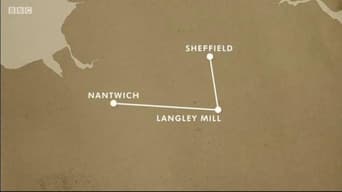
Sheffield to Nantwich
Episode number: 13
Overview: With his Edwardian railway guidebook tucked under his arm, Michael Portillo is in the steel city of Sheffield, where he discovers an enormous and beautifully preserved early 20th-century steam engine. At 400 tonnes and packing 12,000 horsepower, it produced armour plate for the most feared warship of the Royal Navy. Heading south into Nottinghamshire, Michael reaches what was once the most successful coalfield in Europe. He follows his Bradshaw's guide to the former pit village of Eastwood, where he finds the birthplace of a man then called Bert, better known today as DH Lawrence. The author of Women in Love and Lady Chatterley's Lover opened the eyes of Edwardian society to the life of the working class and challenged their attitudes towards sexuality. Michael finishes with a dip in the briny at Nantwich.
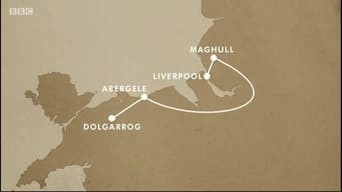
Liverpool to Dolgarrog
Episode number: 14
Overview: Michael Portillo's Edwardian railway guide takes him to the city of Liverpool, where King Edward VII had recently laid the foundation stone for a grand Anglican cathedral at the top of St James's Mount. The young winner of a competition to design the building was a Roman Catholic from a family of architects. His name was Giles Gilbert Scott. Michael takes a trip down his own memory lane in Maghull on the outskirts of Liverpool, where he discovers a childhood favourite - a miniature tank engine with three carriages in dark red - made by Frank Hornby. Heading west to Wales, Michael skirts the coast to reach Abergele, where he visits the romantic ruined Gwrych Castle. He learns the story of its fervently Welsh countess, the last of the Lloyds of Gwyrch, and admires the dedication to her legacy of a young man devoted to restoring the estate.
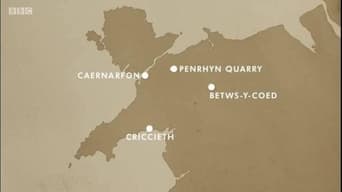
Criccieth to Caernarfon
Episode number: 15
Overview: With his Edwardian Bradshaw's railway guide tucked under his arm, Michael Portillo begins the last leg of his journey from Hull to Caernarfon. In picturesque Snowdonia, he braves the fastest zip line in the world - stretching 1,500 feet across a vast slate quarry. He uncovers a bitter industrial dispute between quarrymen and the owner of the pit, Lord Penrhyn, which divided the community at the beginning of the 20th century. Riding north Wales's splendid heritage railways, Michael visits the home of British mountaineering, Pen y Gwryd, to hear how an Edwardian journalist and poet created a climbing community, which grew to include men who would conquer Everest in the 1950s. Michael meets the grandson of one of his political heroes, the Edwardian Prime Minister David Lloyd George, at his birthplace in Criccieth.